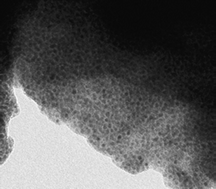The effect of microwave assisted and conventional thermal heating on the morphological, microstructural and compositional evolution upon annealing of inorganic–organic Si–Zr based hybrid materials and on their conversion to mixed oxides (consisting of host silica with variable amounts of zirconia) was systematically studied. Samples with different compositions (Si : Zr = 2.5 : 1; 5 : 1; 10 : 1; 20 : 1), annealed at different temperatures (RT, 600, 800, 900 °C, 1000 °C) by using either a microwave oven or a conventional muffle were analysed to clarify the role of microwave heating on the final molecular features of the materials. The composition of the hybrid, as well as of the final oxidic materials was determined by X-ray photoelectron spectroscopy (XPS) and elemental analysis (EA), whereas FT-IR and multinuclear solid-state NMR spectroscopies shed light on the changes occurring in the composition upon thermal heating and the degree of condensation of the silica network. Interesting differences in the morphology and in the microstructure of the hybrids and of the oxides as a function of the type of annealing were pointed out by nitrogen sorption and scanning electron microscopy (SEM). X-Ray diffraction (XRD) and transmission electron microscopy (TEM) were used to follow the conversion of the amorphous oxides to partially crystalline materials consisting of crystalline zirconia nanoclusters homogeneously dispersed in the amorphous silica matrix.
Interesting microstructural and morphological differences were revealed between samples annealed in muffle and those heated in the presence of microwaves.

You have access to this article
 Please wait while we load your content...
Something went wrong. Try again?
Please wait while we load your content...
Something went wrong. Try again?


 Please wait while we load your content...
Please wait while we load your content...